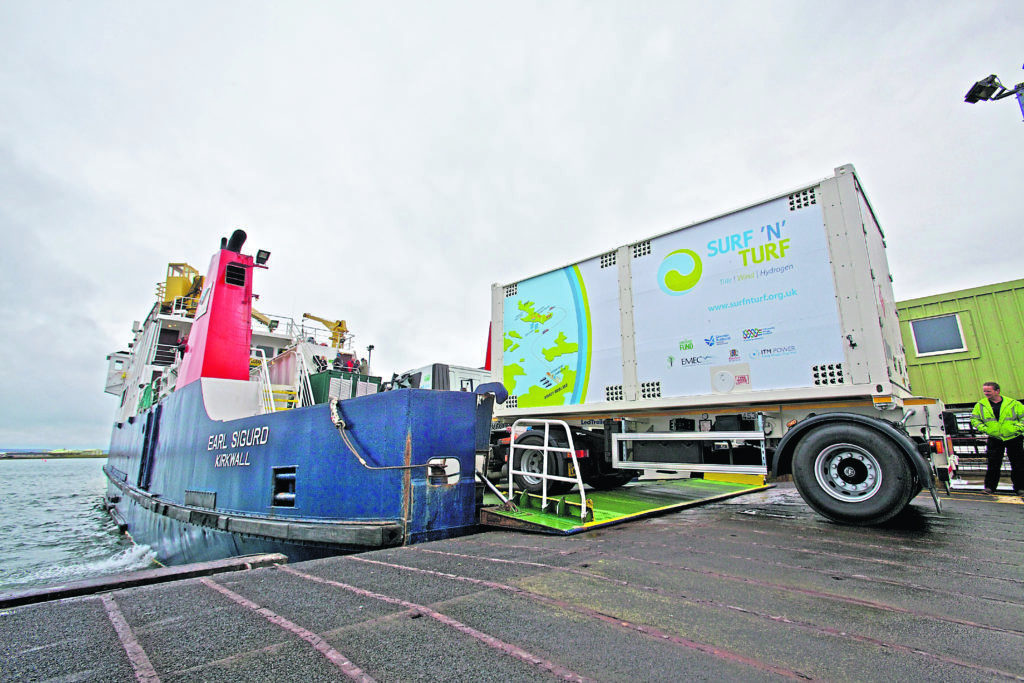
At some point in almost every decade since the 1970s a politician has insisted that the oil and gas industry has no more than 10 years to run.
It has proved to be nonsense, though given climate change pressures and concerns over the use of plastic and diesel fuels, the likelihood of a rapid shrinkage is now considerably more likely. It’s still more than 10 years away, however.
Hydrogen has been the subject of the same sort of ill-considered comment but the other way round. The view has been that hydrogen- powered fuel cell vehicles are always 10 years or more away.
That’s no longer the case. Fuel cell vehicles are here, though apart from a few buses in Scotland and a handful of fuel cell cars in other parts of the UK, this may not appear very obvious.
However, as is often the case in Scotland and across the UK, it’s not wise to judge the state of a global industry on what is happening here.
Oil and gas is ubiquitous. We use it to generate electricity, to heat our homes, to cook with, to power transport and as feedstock for chemicals including plastics.
That’s been a huge advantage both economically and practically because it means we’re using a single source raw product. However, it also means that anything we might want to consider as a replacement to achieve the zero carbon world that most governments want has to achieve the same or similar levels of usability.
Fortunately with hydrogen we can pretty much achieve all that now.
Hydrogen can be used for cooking and heating. There’s a hydrogen boiler at the Hydrogen Office in Fife and hydrogen-powered fuel cells can replace fixed and portable generators to provide electricity.
Plastics from hydrogen are still problematic, but that can encourage us to investigate plastic alternatives. This is happening already due to the plastics disposal problem.
An example is the replacement of plastic straws with paper ones, which, if memory serves me well, is what they used to be made of anyway.
Scientists in various countries including Spain and the US have already come up with ways of extracting hydrogen from plastic waste. It could be the case that a large part of our plastic waste needn’t be dumped but collected and used as a hydrogen feedstock.
Hydrogen production using renewable resources to make it as zero carbon as possible is already viable.
A recent EU-funded trial using a tidal turbine in Orkney is working well, as is a small-scale demonstrator at the Hydrogen Office in Fife. The latter is using a wind turbine to power the electrolyser that produces their hydrogen.
The Petroleum Economist magazine reported recently that governments and investors in Japan, China, South Korea and Australia are increasingly turning to hydrogen as a long-term alternative to fossil fuels.
Every day brings more news on hydrogen. In June, Hyundai and Audi formed a partnership on the development of fuel-cell electric vehicles.
Toyota has said that by 2020 it will be producing 30,000 fuel-cell vehicles per year.
French company Alstom is building hydrogen fuel cell trains and in Scotland a small shipyard in Port Glasgow is now part of an EU-funded project called Hyseas III to build a fuel cell powered ferry.
Even more exciting perhaps is the prospect for hydrogen fuel cell powered aircraft. Small prototypes have already flown in Germany and the US, while Norway wants all internal flights to be electric as soon as possible.
Fuel cells will also play a major role in the decarbonisation of shipping. The French have built a hydrogen-powered yacht which has completed a number of long distance voyages.
France plans to become a world leader in hydrogen and intends to spend an initial 100 million euros to help that happen.
California is probably the current leader in the adoption of fuel cell vehicles. China is a major player. Emphasis in Scotland seems to be on battery-powered vehicles. It’s a short termist view.
We have one company in Scotland now that can build a hydrogen refueller – H2Tec – and there’s ITM Power in Sheffield, which builds its own electrolysers and two or three very small companies developing fuel cells in England.
We need to do a lot more. The potential for renewable hydrogen production in Scotland is huge. We have wind and tidal energy available and it’s time we did something with them.
We shouldn’t be lagging behind like this.
Recommended for you
